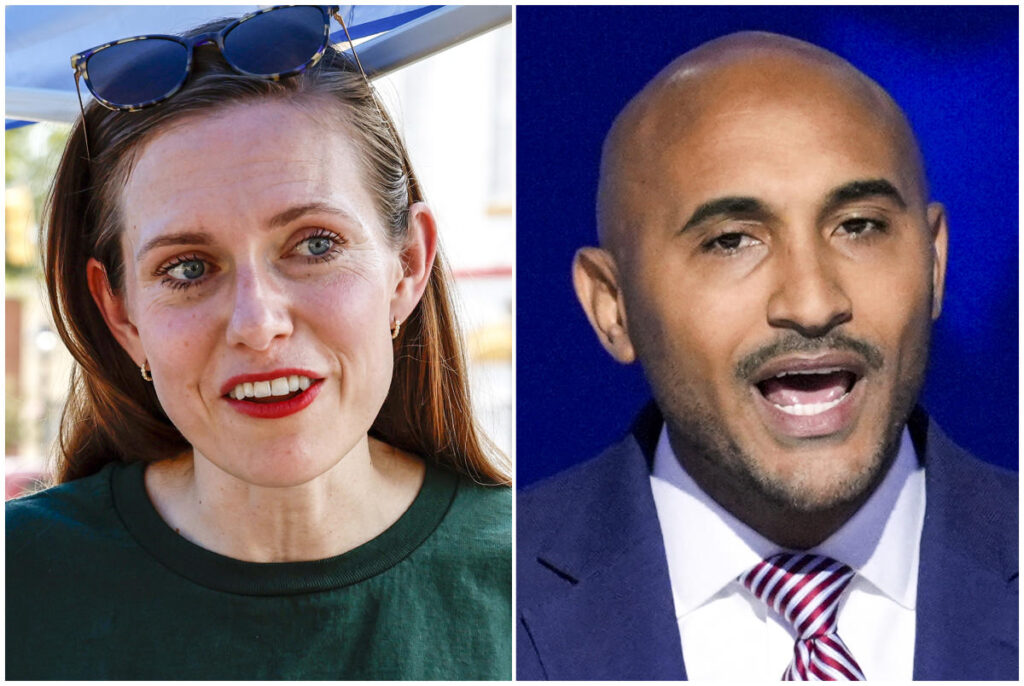In Alabama’s 2nd Congressional District, the race between Democratic nominee Shomari Figures and Republican candidate Caroleene Dobson is gaining urgency as both candidates embark on their final campaign efforts. This election is consequential not only for the candidates but also as it could influence the balance of power in the U.S. House of Representatives. The district, once considered a Republican stronghold, has undergone significant changes following a federal court’s ruling that found Alabama’s previous districting practices had unlawfully diminished the electoral influence of Black voters. The new map has resulted in an area where nearly 49% of voting-age residents are Black, prompting the Cook Political Report to categorize the seat as “likely Democrat,” though both campaigns maintain that it remains competitive.
Figures has positioned his candidacy as a continuation of the civil rights movement, drawing on his familial ties to the fight for racial equality and his experience as a former aide to prominent Democratic leaders. During a rally in downtown Montgomery, he spoke about the necessity for federal involvement in improving community conditions, addressing issues like health care, infrastructure, and education that deeply impact Alabamians’ lives. Emphasizing his commitment to the work ahead, Figures is focused not merely on winning but on advancing policies that benefit the community. His campaign received a notable boost from former President Barack Obama, who recorded a message urging Alabama voters to support Figures. Additionally, U.S. House Minority Leader Hakeem Jeffries joined the campaign trail to rally support for the Democratic candidate.
Conversely, Republican candidate Caroleene Dobson is focusing her campaign on concerns regarding inflation and immigration, presenting them as critical issues that resonate across party lines. At a campaign event in Montgomery, Dobson encouraged attendees to reject the existing political status quo and assert their desires for change to Washington. Throughout her campaign, she has framed Figures as a “Washington insider,” arguing that his policies have contributed to the rising costs and crime rates currently troubling families in the district. Her narrative seeks to connect with voters by emphasizing her understanding of their daily struggles and the urgent need for effective representation that prioritizes practical solutions over political rhetoric.
Meanwhile, the Alabama Republican Party has taken a more contentious approach, distributing provocative mailers targeting Figures. These ads, which some perceive as racially charged, sought to link Figures to crime by featuring a mugshot of a Black man involved in drug trafficking alongside accusations that Figures supports releasing “dangerous criminals.” Figures denounced these tactics as an example of race-baiting and critiqued the nature of the Republican Party’s campaign strategies. Alabama GOP Chairman John Wahl defended the mailers as a necessary examination of criminal justice that concerns all communities, indicating a willingness to address the issue without regard for race.
Supporters from both camps have expressed their enthusiasm for their respective candidates. At a campaign stop, a local real estate developer lauded Dobson’s intelligence and qualifications, asserting his commitment to vote for her. On the other hand, Black voters like Shalela Dowdy, who were involved in challenging the state’s previous congressional maps, regard this election as a crucial moment for their communities. Dowdy’s involvement in the litigation reflects a desire for acknowledgment and representation of Black constituents, and she believes the newly drawn district will necessitate responsiveness from the elected representative to meet the needs of diverse populations within it.
In summary, the campaign for Alabama’s 2nd Congressional District is characterized by significant shifts in voter demographics and political strategies as both candidates strive to galvanize turnout. Figures embraces the legacy of the civil rights movement while addressing pressing community challenges, whereas Dobson appeals to fears surrounding the economy and safety concerns. This race is not only a pivotal moment for the candidates involved but also plays a larger role in shaping the political landscape of Alabama and the broader national narrative regarding representation and inclusivity within the democratic process. The outcomes may reflect ongoing tensions within the state and serve as a barometer for future political dynamics in the Deep South.

